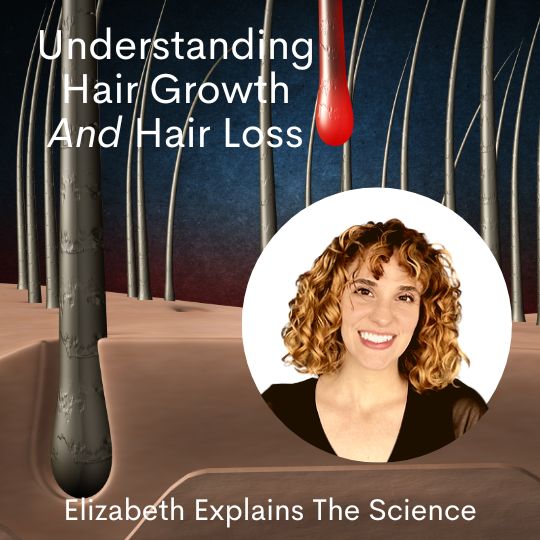The Life Cycle Of Hair
Anagen, Catagen and Telogen

The Choices We Make…
…affect hair loss reduction and prevention!
Turns out that anagen, catagen and telogen aren’t just words for the high school biology room. The three phases of hair growth can tell us a lot about what is going on with our hair and hair follicles. A lot of times, we need look no further for explanations of hair loss, hair growth and hair that just never seems to grow past our shoulders.
Before diving into that however, let’s take a quick review of what exactly a hair follicle is and does. Hair is rooted in the epidermis and dermis layers of our skin. This root is surrounded by a structure called the follicle and that is where the hair is anchored and provided with everything it needs to grow. The follicle is nourished from blood vessels below, and softened and protected by the sebaceous gland as the hair pushes its way to the surface. Anagen is the active growth phase of our hair. This phase is the longest, lasting anywhere from 2 to 6 years, giving us about .5 inch every 28 days. The exact amount of time this phase lasts is genetically determined for each individual. This can explain why some can easily grow their hair very long, and others can never seem to grow it past their shoulders. At the end of this phase, there is a signal carried to the follicle by the blood vessels that causes the hair to pass to the next phase. Catagen is the shorter, transitional phase lasting about 2 to 3 weeks. During this phase, the hair detaches from its blood supply, weakening the root, and getting it ready to shed. This brings us to our third and final phase. When in telogen, the follicle releases the hair and rests for 3-4 months. After this rest period, A new hair is grown in the same follicle and the growth cycle begins again.
Now, you might be asking, ‘how am I not bald?’ It’s important to keep in mind not that not all the hair on your head is going through the same phase at the same time. There are many things that will shorten the anagen phase. A few of them being a calorie restricted diet, hormonal changes such as birth or menopause, stress, trauma, recent anesthesia or certain illnesses. It’s possible for these to alter the hormonal messages sent to the follicles, causing the follicle to pass prematurely to catagen.
Educating ourselves on these natural processes can take some of the mystery out of why our hair does what it does. Supporting hair in all its phases is essential. Some ways we can do this is by choosing our external products with intention and care. Products that have sulfates are known to strip hair of their natural oils. Some have phthalates that cause hormonal disruption. Others have formaldehyde which is carcinogenic and is easily absorbed by the skin. These are just some examples and can unfortunately be found in a lot of everyday hair products. At incentives, we use products we are confident in; products that have been chosen for their cleaner ingredient list and effectiveness. Now that’s something to feel great about!
Concerns with your hair growth/loss please book a consultation and we would be happy to help you get to the “root” of the problem and suggest some possible strategies to lessen the impact and appearance of your hair loss or thinning.
Elizabeth Zitvogel
Call 631-893-3490, stop in, or click the button to book your appointment online.






